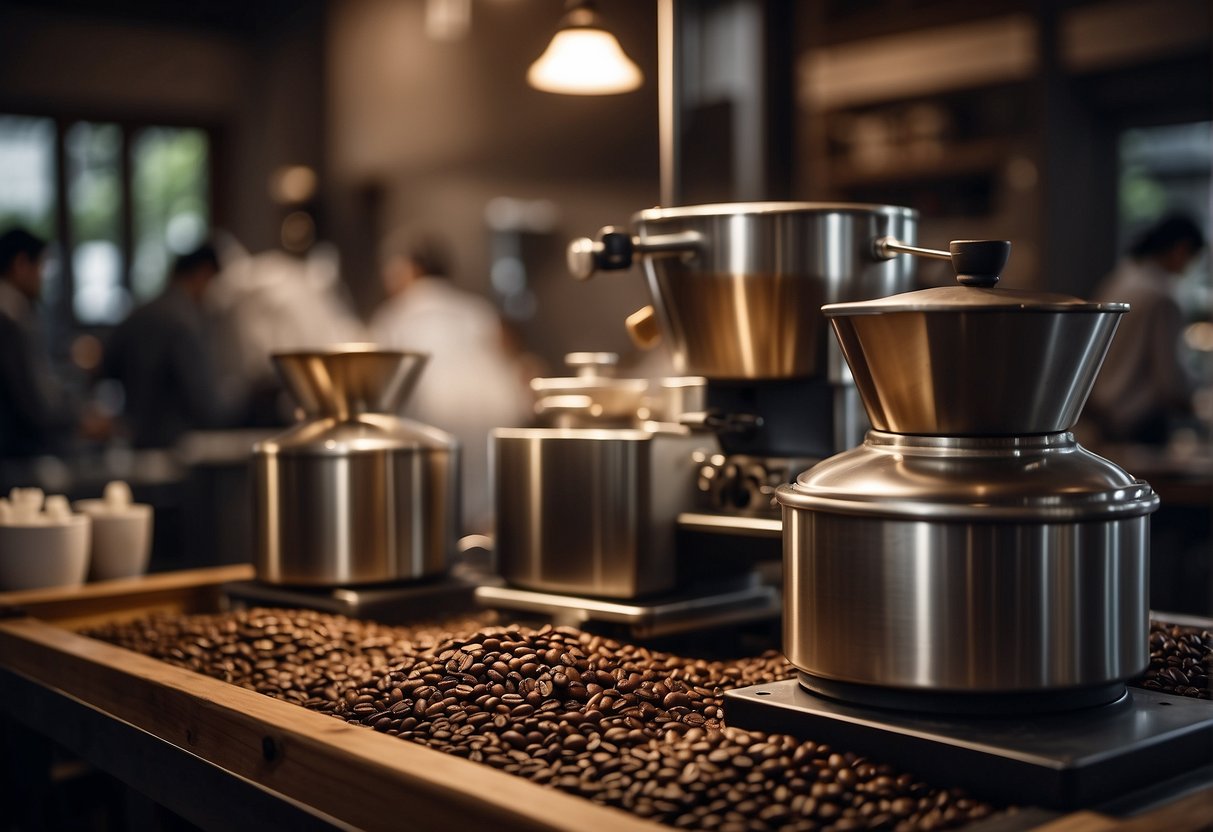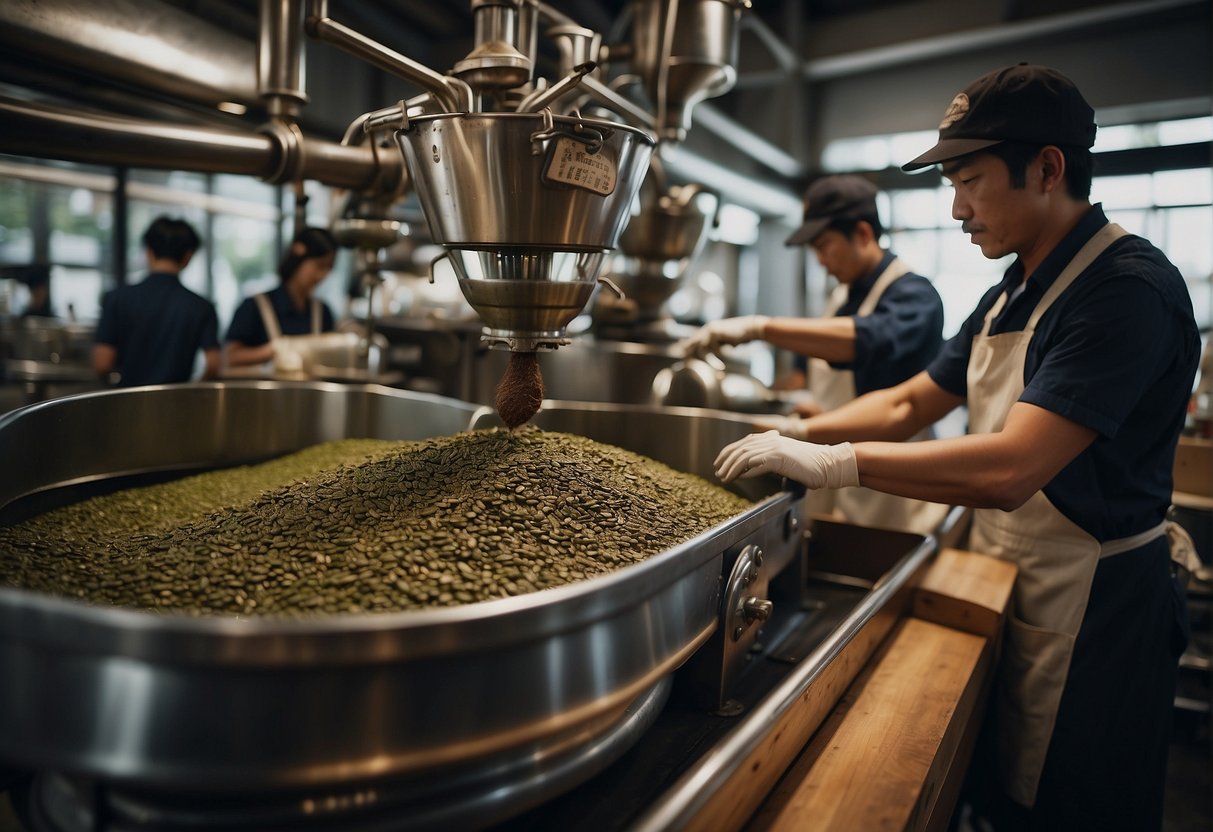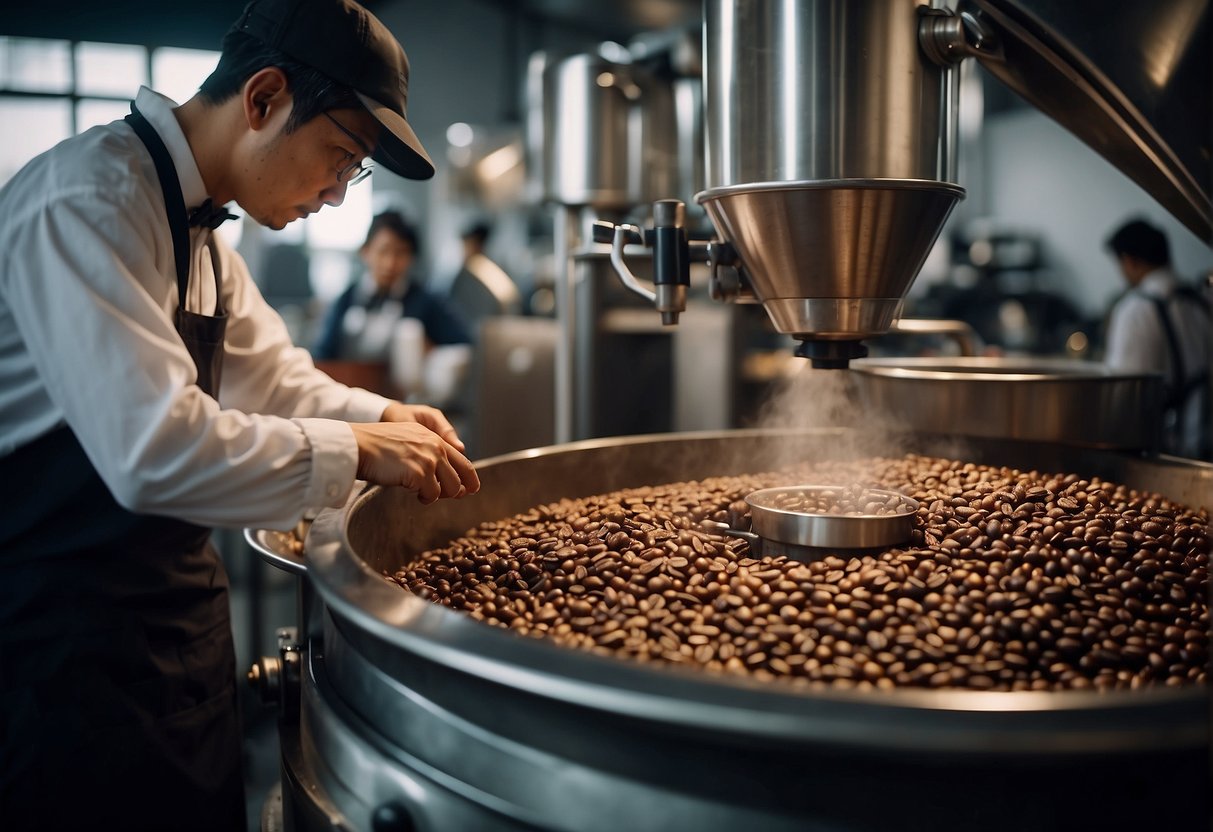Japan’s coffee culture extends far beyond the ubiquitous vending machine cans and café lattes found on every city corner. It embraces a deep respect for craftsmanship and tradition, characteristics that are perfectly embodied in its thriving specialty coffee scene. In Tokyo alone, bustling streets hide gems of meticulous coffee roasting, where the scent of freshly ground beans fills the air. Local artisans dedicate themselves to small-batch coffee roasting, creating unique blends and singular taste experiences sought after by enthusiasts and casual drinkers alike.

These coffee roasters in Japan are renowned not just for their dedication to quality, but also for their innovative approaches that often meld time-honored methods with modern techniques. Every cup of coffee tells a story of its origin, the journey of its beans, and the passion of the roaster. Whether it’s a revered establishment like Horiguchi Coffee with its long history and direct connections to coffee growers, or the harmonious and modern infusions found in the cups served by Leaves Coffee, Japanese coffee roasters are at the heart of a culture that’s both deeply traditional and refreshingly contemporary.
The significance of these roasters is not limited to the quality of their coffee; they are also social spaces that foster community. Places like Allpress Tokyo Roastery & Café are indicative of spaces that encourage connection over a carefully crafted brew. In these environments, patrons appreciate the attentive process from bean to cup, witnessing first-hand the transformation that takes place within the hands of skilled roasters in Tokyo and across Japan.
The History and Culture of Coffee in Japan
https://www.youtube.com/watch?v=1nDDpCJvp-E&embed=true
In Japan, the coffee industry has undergone a remarkable transformation, from traditional kissaten to modern specialty coffee shops, while still preserving its unique heritage and integrating global influences.
The Evolution of Kissaten to Specialty Coffee Shops
Kissaten, traditional Japanese coffee shops, have been central to Japan’s coffee culture for decades. These establishments served as social hubs offering not just coffee but also a place for intellectual and cultural exchange. Over time, the kissaten paved the way for today’s vibrant specialty coffee scene. These contemporary shops often focus on the origins and roasting methods of beans, catering to a growing interest in high-quality, artisanal coffee experiences. Tokyo’s coffee culture, in particular, embodies this evolution, showcasing meticulous brewing techniques and a keen appreciation for coffee craftsmanship.
Influence of Global Coffee Traditions on Japan
Japan’s coffee scene has also been significantly influenced by global coffee traditions. The practice of omotenashi, which denotes Japanese hospitality, is evident in the attentive service one receives in Japanese coffee establishments. This service philosophy, when combined with global trends such as third-wave coffee — a movement that emphasizes direct trade and artisanal brewing methods — shapes a coffee culture in Japan that is both respectful of tradition and receptive to innovation. These influences have contributed to the development of a unique coffee culture in Japan, characterized by a blend of Japanese tradition and international coffee practices.
Prominent Coffee Roasters in Tokyo

Tokyo’s coffee culture is as diverse and dynamic as the city itself, with areas like Shibuya and Meguro showcasing the rich variety and innovative spirit of local coffee roasters.
The Distinctiveness of Shibuya and Meguro Roasters
Shibuya stands out with joints like The Roastery by Nozy Coffee, where the emphasis on single-origin beans reflects a global yet distinctly local flavor profile. Visitors to The Roastery can expect an approach that is both artisanal and accessible, with baristas eager to share their knowledge about the origins and characteristics of their coffee selections. Over in Meguro, Onibus Coffee offers a range of meticulously sourced beans, roasted on-site with a level of craftsmanship that has built them a dedicated following. Their presence in the city is not just about the beans; it’s about fostering community and coffee education.
Innovative Approaches in Kuramae and Harajuku
Heading towards Kuramae, innovation meets tradition in the local coffee scene. Koffee Mameya, formerly known as Omotesando Koffee, takes a philosophical approach to coffee roasting, treating it as a craft that requires deep understanding and respect for each individual bean. Around Harajuku, Fuglen Tokyo exemplifies the seamless blend of Nordic and Japanese coffee cultures, with its roots in Oslo’s coffee scene bringing a unique perspective to the roasting and brewing processes in Tokyo. Here, one can sip on coffee that pushes boundaries, roasting and serving up beans in ways that challenge and delight the palate.
With these roasters and more, Tokyo serves as a hub of coffee innovation and dedication, where each establishment brews a piece of a larger, ever-evolving tapestry of taste and expertise.
Specialty Coffee Roasting Techniques

In the world of Japanese specialty coffee, the techniques employed during the roasting process are crucial to developing the desired quality and profiles of the beans.
Exploring the Roast Spectrum: Light to Dark
Light roasts are typically used to preserve the unique characteristics of single-origin beans, highlighting their inherent flavors and acidity. They have a light brown color and no oil on the surface of the beans. In contrast, medium roasts balance acidity and body, offering a richer flavor. Dark roasts create bold and robust coffees with a shiny, oily surface and a pronounced bitterness as they approach the charcoal flavors of an extremely dark roast.
- Light: High acidity, pronounced flavors, no oil.
- Medium: Balanced acidity, fuller body, some oil.
- Dark: Low acidity, strong flavors, oily surface.
Single-Origin vs. Blend: Understanding the Difference
Single-origin coffees come from a single place, and roasters aim to enhance the beans’ unique profile, which can range from floral to fruity. They are often roasted lightly to medium to maintain their distinct taste. On the other hand, blends consist of beans from multiple origins, where roasters aim to create a harmonious flavor profile that is consistent in every batch. Blends are often roasted to a medium level to balance acidity with the complex flavors from various bean origins and to produce a well-rounded taste in the cup.
- Single-origin: Specific regional characteristics, lighter roasts.
- Blends: Consistency and balance, medium roasts.
By meticulous control of roasting time and temperature, Japanese coffee roasters are able to produce freshly roasted coffee that brings out the best in both single-origin beans and blends.
Coffee Varieties and Their Unique Profiles
Coffee connoisseurs take great interest in the diverse flavor profiles that single-origin coffees from different regions present. The distinctiveness of each region’s beans is owed to the unique soil, climate, and cultivation practices.
Single-Origin Selections from Africa and Latin America
Africa is renowned for its single-origin coffees, with Kenya offering beans that have a vivid acidity and complex range of flavors, often with berry and citrus notes. In contrast, coffees from Ethiopia might present floral aromas, with hints of wine and even chocolate. The continent as a whole is regarded for producing coffees with particularly exotic and dynamic profiles, attracting those who seek a multi-dimensional tasting experience.
Moving to Latin America, countries such as Honduras, Guatemala, and Panama are celebrated for their single-origin coffee varieties. Honduran coffees typically have a mild, sweet taste with a notable balance, which can include chocolaty to fruity notes. Guatemalan varieties tend to exhibit a rich, full-bodied flavor with a chocolatey undertone, while beans from Panama are prized for their bright acidity and often present a range of flavors from citrus to honey and jasmine.
The Science of Flavors and Aromas in Coffee Beans
The flavor and aroma profile of coffee beans is influenced by their chemical compounds, including acids, sugars, and oils. The delicate process of roasting brings these traits to the forefront, allowing the character of each origin’s beans to shine. For example, a coffee bean’s sweetness is correlated with its sugar content, which is caramelized during roasting, influencing both aroma and taste.
The flavors experienced in a cup of coffee are diverse, including but not limited to fruity, floral, earthy, and spicy notes. The specific fragrance and taste, whether it be hints of blueberry or a subtle spicy finish, are attributed to the beans’ origin and their treatment post-harvest, such as the method of drying and washing. Understanding what influences these characteristics enables roasters in Japan to artfully highlight the innate qualities of their coffee selections.
The Specialty Coffee Experience
In Japan, specialty coffee offers an immersive experience embodying meticulous brewing methods and varied taste profiles that elevate the coffee-drinking ritual.
Brewing Methods: Drip, Espresso, and More
Drip Coffee: Known for its clarity and precision, drip coffee in Japanese cafes is often prepared using the pour-over method. Baristas pay close attention to the speed and temperature of the pour, resulting in a coffee that accentuates the bean’s natural characteristics.
Espresso-Based Drinks: Espresso serves as the backbone for a multitude of coffee beverages. Japanese baristas craft a range of espresso drinks from the robust Americano to the creamy Cafe Latte, each with a harmonious balance of strength and flavor.
Filter and Nel Drip: Apart from the modern filter machines, traditional nel drip procedures with cloth filters are also a part of Japan’s coffee repertoire. This method is revered for producing a cup with a full body and intricate flavors, showing a respect for the traditions that have shaped Japanese coffee culture.
Single Origin Espresso: Connoisseurs will appreciate single-origin espresso shots that provide an intimate insight into the terroir of the coffee, reflecting the singular notes of the region from which they were sourced.
Coffee Tasting Notes: From Acidity to Sweetness
Taste Profile in Coffees:
- Acidity: Specialty coffee in Japan is often assessed for its acidity. A bright acidity is synonymous with vividness and can range from citrusy to berry-like notes.
- Sweetness: A sign of a well-roasted coffee is the presence of inherent sweetness. The nuanced sweetness can evoke flavors like caramel in a rich Flat White or dark chocolate in a bold espresso.
- Single Origin Characteristics: Single-origin coffees offer a unique spectrum of flavors. Customers might discern nutty, fruity, or floral notes, each telling a story of the coffee’s journey from farm to cup.
“Taste Wheel” Experience:
Japanese cafes may provide a “taste wheel” to help customers identify the complex flavors within their cup. This educative tool enriches the coffee experience, guiding the palate through the subtleties of body, aroma, and aftertaste.
The careful calibration of equipment and the barista’s skill in adjusting variables like grind size and water temperature ensure that every cup of coffee, be it an espresso or a meticulously prepared pour-over, delivers a rich tapestry of flavors for a sophisticated coffee experience.
